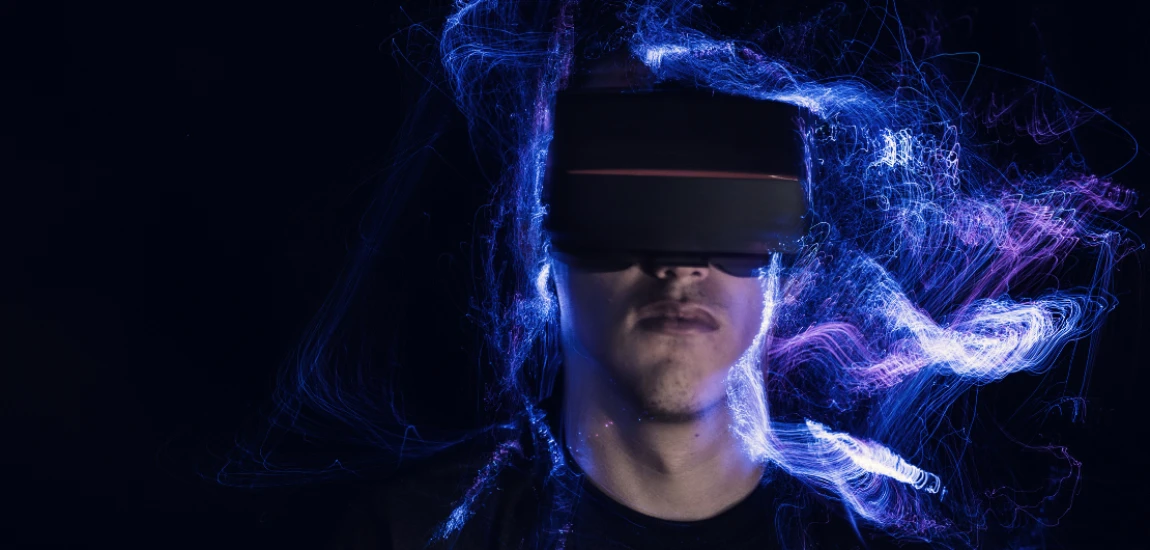Virtual Reality TV: The Future of Immersive Viewing?

Defining Virtual Reality TV
Virtual Reality TV refers to the merging of traditional television formats with immersive VR technology. Unlike watching shows on a flat screen, VR TV transports viewers into the story world, creating the sensation of being inside the narrative. Imagine watching a cooking show and standing virtually in the chef’s kitchen or attending a concert in VR as if you’re part of the crowd.
Why It’s a Big Deal
The rise of virtual reality TV matters because it pushes entertainment beyond passive viewing. It transforms audiences from spectators into participants. As younger generations seek experiences over simple content, VR offers a unique value that traditional TV cannot replicate.
Early Signs of Growth
Platforms like Meta’s Horizon Worlds and VR-compatible apps on Oculus and PlayStation already experiment with immersive video. Netflix and Disney have tested VR environments, while sports broadcasters use VR to enhance live event viewing. These examples hint at the future potential of VR TV as a mainstream entertainment channel.
The Technology Powering Immersive Viewing

Hardware Advancements
Virtual reality TV relies heavily on VR headsets, motion sensors, and spatial audio. Devices like Meta Quest 3, PlayStation VR2, and Apple Vision Pro are making VR more accessible. Lightweight designs, higher resolutions, and better refresh rates improve comfort and realism for long viewing sessions.
Software and Content Platforms
The backbone of VR TV is software innovation. Streaming services are developing VR-compatible apps, while specialized platforms like VRChat and Bigscreen VR allow users to watch movies or shows together in virtual environments. Interactive storytelling tools enable creators to design fully immersive worlds.
Integration with AI and AR
Artificial intelligence enhances VR TV by personalizing experiences, predicting user preferences, and generating realistic avatars. Augmented reality (AR) complements VR by blending immersive environments with real-world elements, creating hybrid experiences that push storytelling boundaries.
How Virtual Reality TV Is Changing the Audience Experience

From Passive Watching to Active Participation
Virtual reality TV shifts audiences from passive viewing to interactive engagement. For example, in a VR drama, viewers might follow different characters’ perspectives by physically moving through the virtual set. This agency creates a deeper sense of immersion and personal connection.
Social Viewing in Virtual Spaces
VR TV isn’t just about individual experiences—it’s social too. Friends can meet in a virtual living room to watch a show together, complete with avatars, chat, and reactions. This reimagines the communal aspect of TV in a digital-first world.
Emotional Impact of Immersion
Studies show immersive media increases empathy and emotional connection. Watching a documentary in VR, where you feel present in a refugee camp or rainforest, creates a visceral understanding that flat-screen content struggles to achieve.
Opportunities for Storytellers and Brands

Expanding Narrative Possibilities
For creators, virtual reality TV opens up new storytelling dimensions. Nonlinear plots, branching narratives, and interactive environments mean stories no longer unfold in a single direction. Viewers can shape the experience based on their choices, creating replay value and deeper engagement.
Brand Collaborations in VR Spaces
Brands are already experimenting with VR by sponsoring virtual concerts or creating branded environments. In VR TV, product placements could become interactive—for example, trying on virtual clothes featured in a show or exploring a branded environment during an episode.
Educational and Training Content
Beyond entertainment, VR TV has opportunities in education. Schools could use immersive documentaries to teach history or science, while companies could use VR-based shows for training simulations. This versatility gives VR storytelling a wide range of applications.
Challenges and Limitations of Virtual Reality TV

High Costs of Adoption
Despite growing interest, VR headsets and compatible devices remain expensive for many households. Until prices drop and accessibility improves, VR TV will struggle to become fully mainstream.
Motion Sickness and Comfort Issues
Some users experience motion sickness, eye strain, or discomfort during prolonged VR use. Solving these challenges is critical to ensuring audiences can engage with VR TV for long periods.
Content Development Gaps
Currently, there’s a shortage of high-quality VR TV content. Creating immersive experiences requires specialized skills and higher budgets, which limits adoption by traditional networks and studios.
The Future of Virtual Reality TV

Mainstream Adoption Timeline
Experts predict VR TV will see gradual adoption over the next 5–10 years as devices become cheaper and content libraries expand. Early adopters are already experimenting, but mass audiences will require a combination of affordability, accessibility, and compelling content.
Hybrid Models with Traditional TV
The future may blend VR with traditional formats. Imagine starting a series on a flat screen but switching into VR for pivotal scenes, concerts, or live events. Hybrid storytelling models could bridge the gap between old and new media.
Toward a Fully Immersive Media Landscape
As 5G, cloud computing, and AI improve, VR TV could evolve into fully immersive, customizable media landscapes. Instead of passively consuming content, audiences will enter dynamic, interactive worlds that redefine what “watching TV” means.




